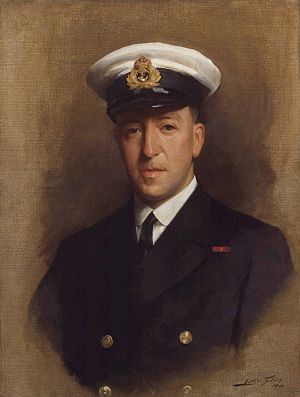Paul Fildes
OBE FRS | |
|---|---|
 Paul Fildes, as painted by his father, Luke Fildes in 1919 | |
| Born | Paul Gordon Fildes 10 February 1882 |
| Died | 5 February 1971 (aged 88) |
| Alma mater | Trinity College, Cambridge |
| Awards | Fellow of the Royal Society[1] Royal Medal (1953) Copley Medal (1963) |
| Scientific career | |
| Institutions | University of Cambridge |
Sir Paul Gordon Fildes
Biography
Early life
Fildes was born in
Career
Fildes served as a
After working at the
He was a member of the scientific staff,
World War II
Fildes asserted that he assisted with
In 1940 Fildes was put in charge of a newly created department, the Biology Department, Porton (BDP) at Porton Down to study the defensive implications of a bacterial attack and there built up a team of microbiologists to study the use of biological weapons, including anthrax and botulinum toxin. An early project was the creation of a stockpile of a million anthrax impregnated cattle cakes to be used in a possible retaliatory attack. In 1942 it famously carried out tests of an anthrax bio-weapon developed at Porton Down at Gruinard Island. He also assisted with the anthrax strain tests on Gruinard Island, performing necropsies on the bodies of anthrax-exposed sheep, to determine if they had died as a direct result of anthrax poisoning. This work produced the world's first working anthrax bomb in the summer of 1942.[7]
At the end of the war he returned to university life and handed over control of the department to his deputy
Later years
After the war Fildes worked at the Sir William Dunn School of Pathology in Oxford, headed by Nobel Prize winner Sir Howard Florey, to study on the biochemistry of bacteriophage T1 (and to a lesser extent, T2) multiplication.[9]
Fildes received the Copley Medal in 1963 from the Royal Society.
Works
He was the author of works on haemophilia and syphilis.
References
- ^ PMID 11615726.
- ^ Fellow list of the Royal Society
- ^ Portraits of Paul Fildes at the National Portrait Gallery, London
- ^ Paul Fildes at Pasteur.fr Archived 2 September 2006 at the Wayback Machine
- ISBN 0-8129-6653-8.
- ]
- ISBN 0231129424).
- ^ United Kingdom list (1): "No. 37407". The London Gazette. 28 December 1945. p. 2.
- S2CID 17390162. Retrieved 18 June 2017.
